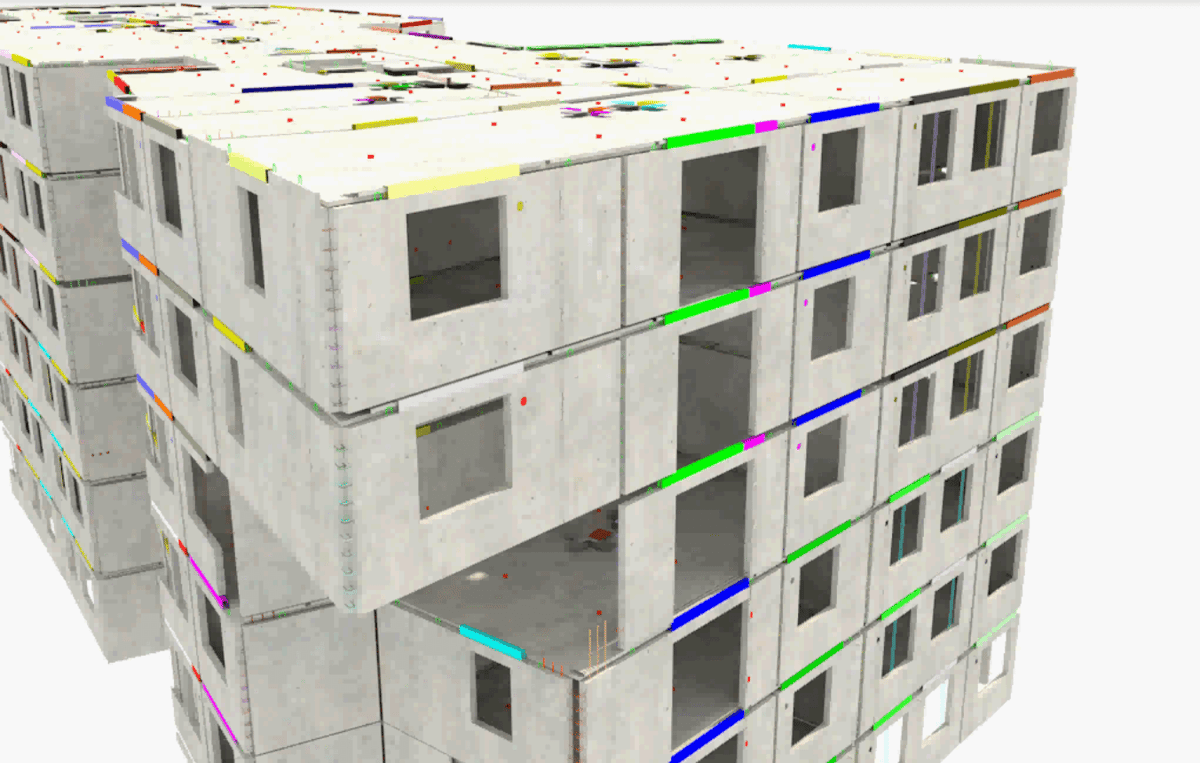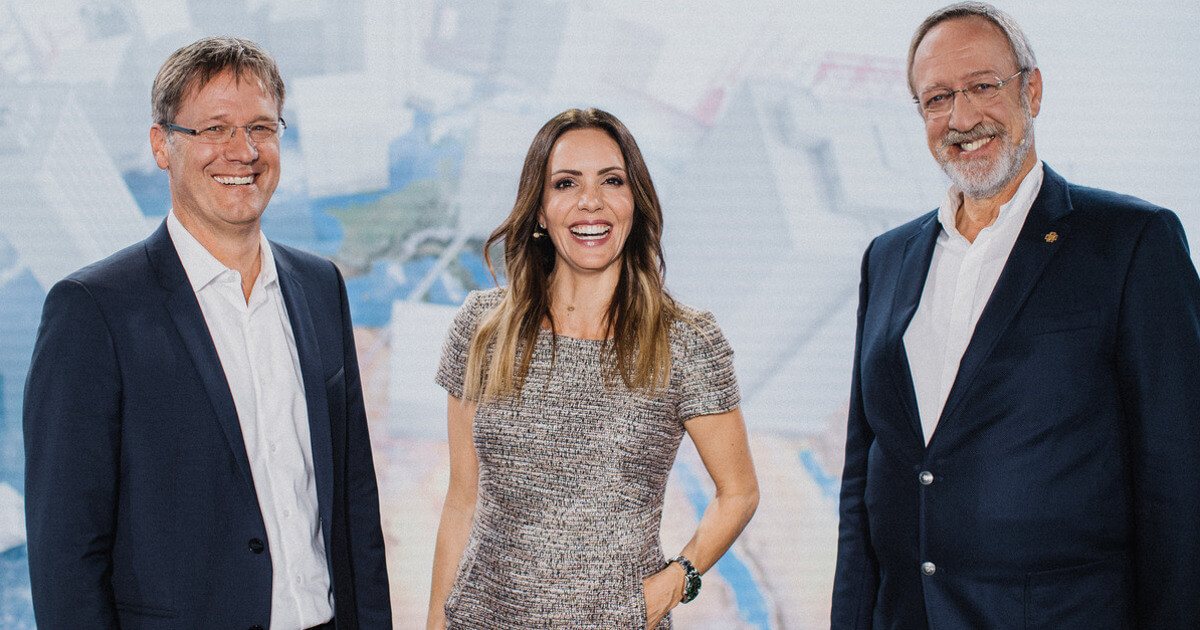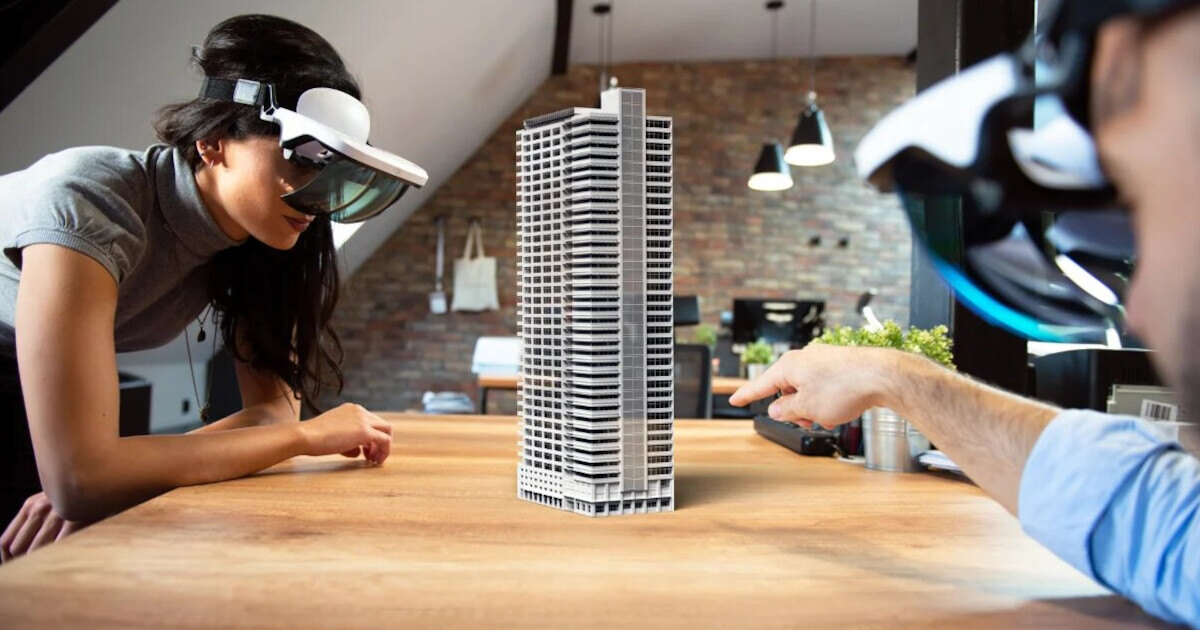Vienna has been pioneering new approaches to sustainable urban development for many years. Creating sustainable and livable spaces that enhance the occupants’ quality of life has been a long-time goal for this city, and at the heart of their development strategy. A perfect example of this is their new district of aspern Seestadt, located in the 22nd district in the north-east of Vienna. Described as a “city within a city”, this 5 billion EUR development is one of Europe’s largest development projects – as well as one of the most sustainable.
About aspern Seestadt
The new development is located on a former airfield and will provide high-quality housing for over 25,000 people as well as 20,000 new workplaces over the next decade. The site area covers 240 hectares – the same size as Vienna’s 1st district. Once completed, the total gross floor space of all planned buildings will cover 2.6 million square meters. Being a mixed-use development, there are also schools, adult learning centers, lakeside parks, and recreational facilities all incorporated into this massive site.
In terms of transport links, the development has two metro stations, as well as a local train station with links to Vienna’s main station and nearby Bratislava. This is supported with seven bus routes and a park and ride facility, as well as future upgrades to the existing tram and links to the major road network. Complementing motorized transport modes is a network of cycle paths and pedestrian routes. All this will support a growing population that is forecast to exceed 2 million by 2027.
_Ralo_Mayer_Bildrecht_2020_NEU.jpg?width=1200&name=HAP_D10_(c)_Ralo_Mayer_Bildrecht_2020_NEU.jpg) © Ralo Mayer
© Ralo Mayer
Built for Sustainability
However, one of the most interesting aspects of the Seestadt is the focus that has been placed on creating a sustainable and eco-friendly development. From the outset, the careful use of resources and building in climate resilience has been a top priority. This has been achieved not only by recycling and reusing existing materials from the site, but also by combining technology and modern methods of construction.
For example, the artificial lake that forms the heart of the new development required the excavation of 650,000 tons of earth. This material – as well as the concrete from the dismantled airfield runways on site – was processed at an on-site construction logistics center and reused to build new structures, roads, and thoroughfares on the site.
Renewable and eco-friendly materials are another focus. The site is also home the world’s second-tallest timber building, HoHo Wien. The tower combines residential and commercial units, with over 75% of the structure made from sustainably sourced wood native to Austria. Timber construction has also been used for other buildings on the development, such as for the walls and cladding of residential buildings.
A large number of buildings were also built using prefabricated parts built off-site at factories. This has accelerated the build process, reduced waste, improved quality, and minimized disruption to local residents and businesses. For example, a large proportion of the western quarter’s residential blocks were built with precast concrete components which were designed and constructed by Mischek Systembau using ALLPLAN’s specialist precast design software, Allplan Precast. This allowed the team to build swiftly and without errors thanks to the thorough planning and production tools from Allplan Precast.
 © ALLPLAN
© ALLPLAN
Incorporating Smart Technologies
The Seestadt is more than just built sustainably, it will be operated sustainably as well. Vienna’s dual infiltration rainwater management model has been upscaled to cover nearly two-thirds of the site when complete. This will provide a rainwater retention system to irrigate trees and thereby improve the local microclimate of the area.
In addition, an on-site laboratory – called the Aspern Smart City Research or ASCR – is monitoring and analyzing the data from the technology that has been built into some of the residential buildings. This provides highly efficient homes for residents, as well as testbeds for new research. The ASCR team is focusing on five main areas, including Smart Building, Smart Grid, Smart User, Smart ICT, and Smart Charging.
 © ALLPLAN
© ALLPLAN
An Inspiring Example of Sustainable Urban Development
The aspern Seestadt development is already an award-winning project, and it’s easy to see why. The focus on sustainable and high-quality living is an impressive and inspiring example to many. With urban populations rising and the increasing challenges of climate change, the aspern Seestadt stands out as a model for future development.
%20Luiza%20Puiu-min_1200x630.jpg)





